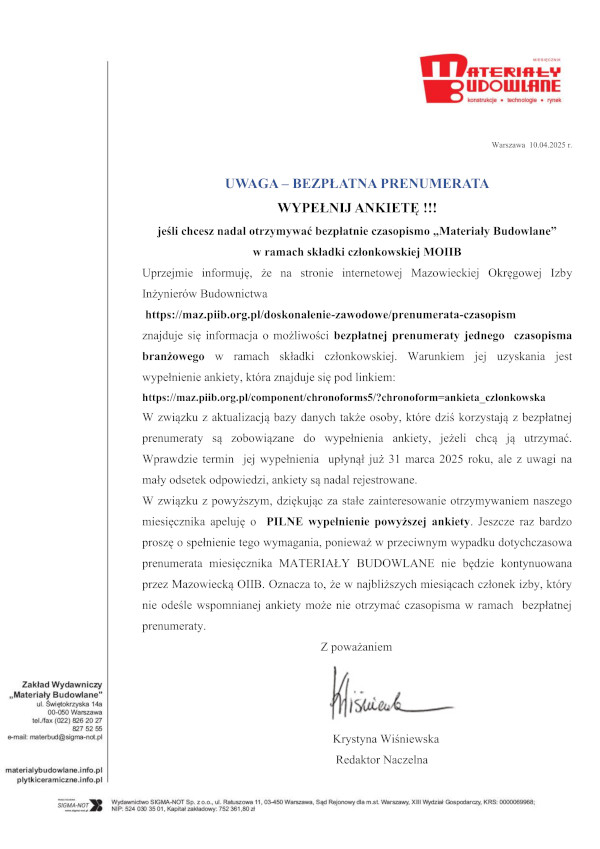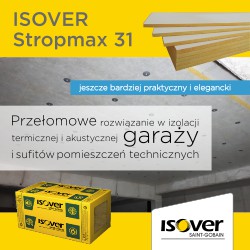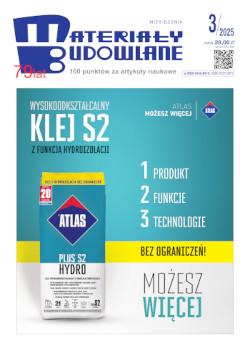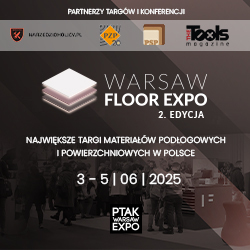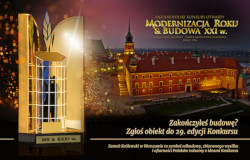Open Access (Artykuł w pliku PDF)
Wykorzystanie i potencjał cyfrowego bliźniaka do monitorowania stanu konstrukcji i badań nieniszczących w celu poprawy trwałości i zapobiegania awariom istniejących konstrukcji
MSc Daria Jasińska, Bydgoszcz University of Science and Technology; Faculty of Civil and Environmental Engineering and Architecture
ORCID: 0000-0002-9075-795X
Phd, Dsc University Professor Maciej Dutkiewicz, Bydgoszcz University of Science and Technology; Faculty of Civil and Environmental Engineering and Architecture
ORCID: 0000-0001-7514-1834
Manon Ancelin, Ecole Supérieure des Ingénieurs des Travaux de la Construction, Francja
Elodie De Morais Dias, Ecole Supérieure des Ingénieurs des Travaux de la Construction, Francja
Arthur Grasselli, Ecole Supérieure des Ingénieurs des Travaux de la Construction, Francja
Nora Morise, Ecole Supérieure des Ingénieurs des Travaux de la Construction, Francja
Gabriel Laot, Ecole Supérieure des Ingénieurs des Travaux de la Construction, Francja
Adres do korespondencji: Ten adres pocztowy jest chroniony przed spamowaniem. Aby go zobaczyć, konieczne jest włączenie w przeglądarce obsługi JavaScript.
DOI: 10.15199/33.2024.06.03
Studium przypadku
Abstract. In this article, we consider the application of Structural Health Monitoring (SHM) and Non-Destructive Testing (NDT) in existing facilities. Based on the literature and our own experience, the issue of structural monitoring is discussed with regard to the direction of this application in the context of further implementing digital twins in the future. The general algorithm and procedures in such a process and considers the impact of continuous monitoring on durability of the object. Building information modelling, structural health monitoring (SHM), 'Non-Destructive Testing' (NDT) are discussed. The whole is based on structures that are extremely important to the industry, such as industrial chimneys. In this article, we discuss an approach to automating the condition inspection process of existing facilities in the context of information management and the use of this information. Reference was made to examples of condition analyses of two steel chimney structures.
Keywords: Non-Destructive Testing (NDT); chimneys; digital twin; existing structures; Structural Health Monitoring (SHM).
Streszczenie. W artykule rozważane jest zastosowanie Structural Health Monitoring (SHM) oraz Non-Destructive Testing (NDT) w istniejących obiektach. Na podstawie literatury i własnego doświadczenia, zagadnienie monitorowania konstrukcji zostało omówione w odniesieniu do kierunku tego zastosowania w kontekście dalszego wdrażania cyfrowych bliźniaków w przyszłości. Przedstawiono ogólny algorytm i procedury w takim procesie oraz rozważono wpływ ciągłego monitoringu obiektu na jego trwałość. Omówiono modelowanie informacji o budynku, monitorowanie stanu konstrukcji (SHM), badania nieniszczące (NDT). Całość bazuje na konstrukcjach niezwykle ważnych dla przemysłu, takich jak kominy przemysłowe. W artykule omawiamy podejście do automatyzacji kontroli stanu technicznego istniejących obiektów w kontekście zarządzania informacją i wykorzystania tej informacji. Odniesiono się do przykładów analiz konstrukcji dwóch stalowych kominów.
Słowa kluczowe: badania nieniszczące (NDT); kominy; cyfrowy bliźniak; istniejące konstrukcje; monitorowanie stanu konstrukcji (SHM).
Literature
[1] Volk R, Stengel J, Schultmann F. Building InformationModeling (BIM) for existing buildings – Literature review and future needs.Automation in Construction, vol. 38, pp. 109-127, 2014, DOI: 10.1016/j.autcon.2013.10.023. Available: https://www.sciencedirect.com/science/article/ pii/S092658051300191X.
[2] Ismail AS, Ali KN, Iahad NA. A review on BIM-based automated code compliance checking system, in Proc. 2017 Int. Conf. Research and Innovation in Information Systems (ICRIIS), 2017, pp. 1-6, DOI: 10.1109/ICRIIS. 2017.8002486. Available: https://ieeexplore.ieee.org/document/ 8002486.
[3] Yen YN, Weng KH, Huang HY. Study on information management for the conservation of traditional Chinese architectural heritage – 3D modelling and metadata representation. ISPRS Ann. Photogramm. Remote Sens. Spatial Inf. Sci., vol. 2, no. 5/W1, pp. 331-336, 2013.Available: http://www.isprs-ann-photogramm-remote- -sens-spatial-inf-sci.net/II-5-W1/331/2013/.
[4] Baik A, Boehm J, Robson S. Jeddah historical building information modeling ‘JHBIM” Old Jeddah-Saudi Arabia,” Int. Arch. Photogramm. Remote Sens. Spatial Inf. Sci., vol. 40, no. 5W2, pp. 73-78, 2013. Available: http://www.scopus.com /inward/record.url?eid=2-s2.0-84924289373&partnerID= 40&md5=8c861677387fca1ecba- 46c9b02343a33.
[5] Arayici Y. Towards building information modelling for existing structures. Struct. Surv., vol. 26, no. 3, pp. 210-222, 2008. Available: http://www.emeraldinsight.com/doi/abs/10.1108/ S1479-3563(2012)000012B007.
[6] Del Giudice M, Osello A. BIM for cultural heritage. Int.Arch. Photogramm. Remote Sens. Spatial Inf. Sci. ISPRS Arch., vol. 40, no. 5W2, pp. 225-229, 2013. Available: http://www.scopus. com/inward/record.url?eid=2-s2.0- 84924330169&partnerID=tZOtx3y1.
[7] Pocobelli DP, Boehm J, Bryan P, et al. BIM for heritage science: a review. Herit. Sci., vol. 6, no. 30, 2018. DOI: 10.1186/s40494-018-0191-4. Available: https://link. springer. com/article/ 10.1186/s40494-018-0191-4.
[8] Shenkman R, Ponomaryov A. Advantages of using BIM (BIM-technology) for the design and construction of subsoil use industry buildings and structures. J. Phys.: Conf. Ser., vol. 1928, no. 012052, 2021. DOI: 10.1088/1742-6596/ 1928/1/012052. Available: https://iopscience. iop. org/article/10.1088/1742-6596/1928/1/012052/pdf.
[9] Types and Design of Steel Chimney Structure. The Constructor. org. [Online].Available: https://theconstructor. org/structural-engg/steel-chimney-types- design/980/. [Accessed:Aug. 02, 2022].
[10] Dutkiewicz M. Expertise opinion of the 80 m high chimney. 2022.
[11] Gołębiowska I, Dutkiewic M. Subcritical flow regime of tandem interfering cylinders. IOP Conf. Ser.: Mater. Sci. Eng., vol. 245, 062053, 2017, DOI: 10.1088/1757-899X/245/6/062053.
[12] Dutkiewicz M, Machado MR, Matt CFT, Castello DA. Spectral model and experimental validation of hysteretic and aerodynamic damping in dynamic analysis of overhead transmission conductor. Mech. Syst. Signal Process., vol. 136, p. 106483.
[13] Moyano J, Gil-Arizon I, Nieto-Julian JE, Marin-Garcia D. Analysis and management of structural deformations through parametric models and HBIM workflow in architectural heritage. J. Build. Eng. 2022; vol. 45, p. 103274.
[14] Le ‘BIMde l’industrie’monte en puissance,” The Agility Effect.com. [Online]. Available: https://www.theagilityeffect.com/fr/article/lebim- de-lindustrie-monte-en-puissance/. [Accessed: Aug. 02, 2022].
[15] Qu’est-ce que le BIM? MagiCAD. com. [Online]. Available: https://www.magicad. com/fr/bim/. [Accessed: Aug. 02, 2022].
[16] Du PIM au BIM. Nextpage.fr. [Online]. Available: https://www.nextpage.fr/pim-bim/. [Accessed: Aug. 02, 2022].
[17] Plant Information Models. Neolant.com. [Online]. Available: https://www.neolant. com/IModeling/. [Accessed: Aug. 02, 2022].
[18] Guzzetti F, Anyabolu KLN, Biolo F, D’Ambrosio L. BIM for existing construction:A different logic scheme and an alternative semantic to enhance the interoperability.Appl. Sci., vol. 11, p. 1855, 2021.
[19] Shoaib KhanM, KhanM, BughioM, Talpur BD, Kim IS, Seo J. An integrated HBIM framework for the management of heritage buildings. Buildings, vol. 12, p. 964, 2022.
[20] Arayici Y, Tah J. Towards building information modelling for existing structures. Struct. Surv., vol. 26, no. 3, p. 210, 2008.
[21] Dutkiewicz M,Aydin E, Öztürk B.Analysis of efficiency of passive dampers in multistorey buildings. J. Sound Vib., vol. 439, pp. 17-28.
[22] Dutkiewicz M, Gołębiowska I, Shatskyi I, Shopa V, Velychkovych A. Some aspects of design and application of inertial dampers. MATEC Web Conf., vol. 178, p. 06010.
Accepted for publication: 21.05.2024 r.
Materiały Budowlane 6/2024, strona 12-16 (spis treści >>)


